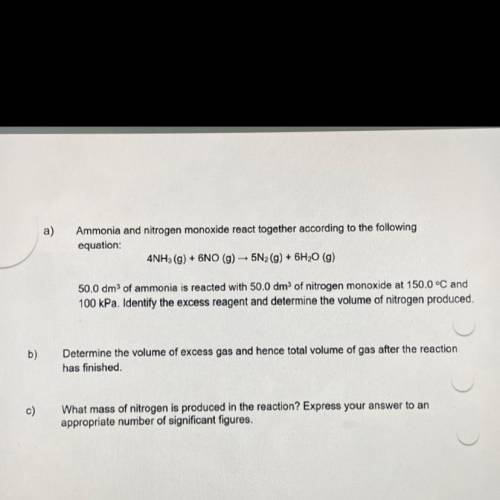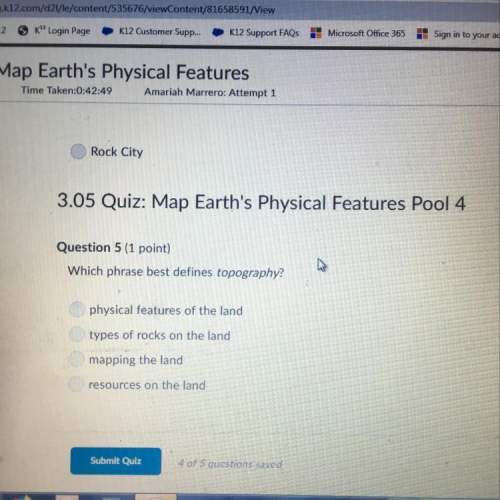A)
Ammonia and nitrogen monoxide react together according to the following
equation:
4...

A)
Ammonia and nitrogen monoxide react together according to the following
equation:
4NH3(g) + 6NO (9) - 5N2 (9) + 6H20 (g)
50.0 dm3 of ammonia is reacted with 50.0 dm3 of nitrogen monoxide at 150.0 °C and
100 kPa. Identify the excess reagent and determine the volume of nitrogen produced.
(2)
b)
Determine the volume of excess gas and hence total volume of gas after the reaction
has finished.
(1)
c)
What mass of nitrogen is produced in the reaction? Express your answer to an
appropriate number of significant figures.
(2)


Answers: 1


Another question on Chemistry

Chemistry, 21.06.2019 15:30
The wilson chamber is used to study: direction, speed, and distance of radioactivity the intensity of radiation the appearance of individual atoms all of the above
Answers: 1

Chemistry, 22.06.2019 04:00
Two nitro no2 groups are chemically bonded to a patch of surface. they can't move to another location on the surface, but they can rotate (see sketch at right). it turns out that the amount of rotational kinetic energy each no2 group can have is required to be a multiple of ε, where =ε×1.010−24 j. in other words, each no2 group could have ε of rotational kinetic energy, or 2ε, or 3ε, and so forth — but it cannot have just any old amount of rotational kinetic energy. suppose the total rotational kinetic energy in this system is initially known to be 32ε. then, some heat is removed from the system, and the total rotational kinetic energy falls to 18ε. calculate the change in entropy. round your answer to 3 significant digits, and be sure it has the correct unit symbol.
Answers: 2

Chemistry, 22.06.2019 06:00
Which of the following did jj thompson discover about atoms? a)an atom has an internal structure. b) atoms are tiny indivisible particles. c)electrons orbit the nucleus of an atom. d) the nucleus of an atom contains protons and neutrons.
Answers: 2

Chemistry, 22.06.2019 16:00
Answer asap : ( a. how does mucus prevent the entry of pathogens? b. describe two ways white blood cells protect us from pathogens.
Answers: 1
You know the right answer?
Questions


Mathematics, 24.11.2020 19:40




Mathematics, 24.11.2020 19:40

Spanish, 24.11.2020 19:40





Chemistry, 24.11.2020 19:40



Geography, 24.11.2020 19:40

Mathematics, 24.11.2020 19:40

Mathematics, 24.11.2020 19:40







